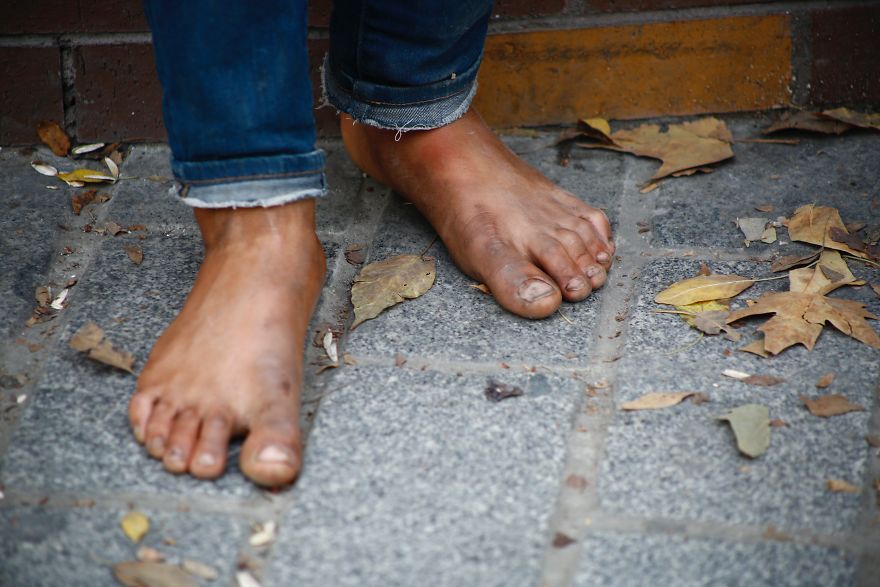Desert Dancer review
by Susan Schwartz
TMO Contributing Writer
The Muslim Observer last week attended, by invitation, a press briefing sponsored by BoomGen Studios which presented the story of the widely acclaimed film, Desert Dancer. Desert Dancer is a biographical film about dancer and choreographer, Afshin Ghaffarian who was born and raised in Iran and from his youth fell in love with dancing. He learned this art from watching smuggled American videos as dancing was forbidden by the government. In the exciting election year climate of 2009, when hope for a regime change was in the air and the youth of Iran began to dream, he and other young Iranians formed an underground dance studio in Tehran. When they danced, they danced in the desert. Desert Dancer presents dancing – artistic expression – as a metaphor for freedom. Eventually Ghaffarian defected to France using a borrowed passport and resides there today.
Dr. Reza Aslan, the co-founder and Chief Creative Officer of BoomGen studios, conducted the press briefing with the three principles of the film: Director Richard Raymond, Reece Ritchie who portrayed Afshin Ghaffarian, and Freida Pinto who portrayed Afshin’s doomed love interest, Elaheh.
Aslan began the briefing by observing that this movie and the discussion it will generate comes at the crucial time of the possible consummation of a nuclear pact with Iran. He then asked Raymond what he knew about Iran when he laid the foundational work for Desert Dancer.
Raymond replied that he knew about the magnificent art history of Iran but was not aware of the restrictions imposed on freedom of expression. The film is about the heroes – the youth of Iran who stood up to the corruption and repression of the regime and used art as a weapon. Oppression, he reminded us, is a worldwide phenomenon.
When asked about the difficulty he faced when making this film, Raymond spoke of the great responsibility he felt to portray accurately these young heroes. He also felt a concurrent obligation to be true to the story.
Pinto spoke of her sense of obligation to accurately portray Elaheh. While the two women never met, Pinto hoped at the onset of production that they would meet in the future. Unfortunately, Elaheh died of a heroin overdose before the release of the film. The knowledge of that makes it all the more poignant to watch her character in Desert Dancer.
Pinto noted that her upbringing was not subject to the same repression as Elaheh’s. Before she began the film she did not know of the extreme violation of human rights that existed in Iran. She was quick to point out that oppression of expression was not then and is not now limited to Iran. When asked about a sense of identity with Elaheh, she said that their upbringings were opposite. But when one portrays a character and literal similarity is absent, one can always bring forth a sense a common humanity.
Ritchie told his audience that Afshin Ghaffarian said he never danced without a reason. When he portrayed him in the film, he had to be true to that.
Ritchie and Pinto underwent concentrated strenuous dance training for their parts in the motion picture. While watching their exquisite performances in Desert Dancer, it is difficult to believe that they were not professional dancers.
In replying to a question from the press, posed by The Muslim Observer, as to what Iranians in America thought of the film, Mr. Raymond said that Iranians throughout the world, including Iran, have embraced the film. The social media were alive with favorable comments and admiration for the film. “We have the same hopes and dreams as you” was not only a particular tweet but seemed to express the feelings of many of the respondents.
Ghaffarian was very involved in the making of the motion picture. While Ghaffarian could not be present at the press call, he had answered questions posed to him by BoomGen studios. He said he believed that one of the goals of the artist is to build bridges of understanding between people and cultures. These bridges permit us to meet on a common plane and render our differences insignificant. He said that people must not join in any way the narrative of warmongers who are dedicated to war and destruction.
| “That no matter who we are and where we are, we have to continuously create,” said Ghaffarian. “Through our creations, we have to invent the world we want to live in, despite all the difficulties. We have to search out new solutions of being in the world. As Pina Bausch said, ‘to create is the only way to be in the world’. In order to exist, we must resist – and to resist, we must create. It should be a permanent struggle for all of us in order to create a better world together. ” Desert Dancer opened to select theaters on April 10th and will be open to general audiences on April 17th. It is an incredibly moving story on multiple levels: of resistance in the face of oppression, of dreams that seem unreachable, but are not; of dance as physical theater; of dance as a sword, and, finally, it is a beautifully acted moving story with great visual appeal. It is apparent that the principles of Desert Dancer felt a strong obligation to their subject matter and strived, with success, to accurately represent it. |















2015
1,092 views
views
0
comments